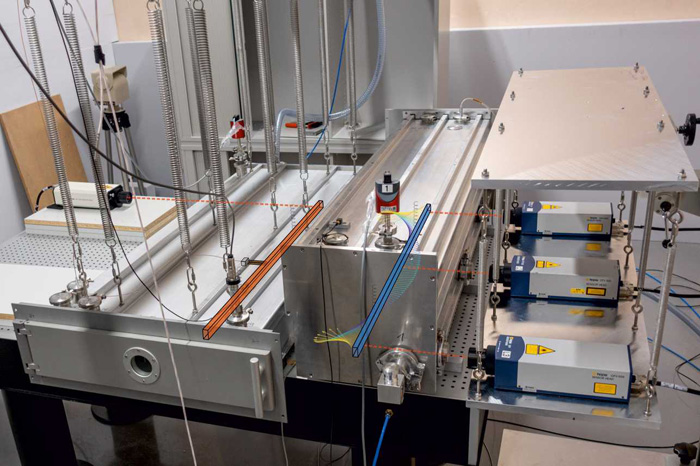Products You May Like
A team of physicists has used a pair of vibrating rods to measure the gravitational constant to incredibly fine precision.
While the new technique has relatively high uncertainty, they hope that future improvements will provide a new pathway to nailing down this elusive constant.
The gravitational constant, denoted as G, is the fundamental building block of our understanding of gravity. Isaac Newton first introduced the constant into his equations when he developed his universal theory of gravitation over 300 years ago.
The constant tells us the fundamental strength of gravity, or the strength of the gravitational attraction between two objects a certain distance apart and with given masses.
We cannot calculate the value of this constant from any theory. We can only discover it through measurement and experimentation.
But since gravity is by far the weakest of the forces, our knowledge of the value of the gravitational constant is relatively imprecise.
“The only option for resolving this situation is to measure the gravitational constant with as many different methods as possible,” explains Jürg Dual, a professor in the Department of Mechanical and Process Engineering at ETH Zurich. Dual led a team to develop a new method for measuring the gravitational constant.
Dual and his team started with a suspended metal bar. They then vibrated the bar and measured how much an adjacent bar also vibrated. The two bars weren’t touching. Instead, as the first bar vibrated it emitted gravitational waves that set the other bar in motion.
Above: The orange rod vibrates, which causes a blue rod to move due to gravitational forces. Four laser devices detect the tiny movements of the rods, their paths depicted by the orange dotted lines.
This is a new way of measuring the gravitational constant that relies on a dynamical system rather than a static one.
With static systems, you also have to contend with the gravitational influence of literally everything else in the universe. With a dynamical system, the physicists were much better able to isolate their measurement.
The measurement of the gravitational constant that the team produced is about 2.2 percent higher than the currently accepted value, but it does have a large uncertainty.
“To obtain a reliable value, we still need to reduce this uncertainty by a considerable amount. We’re already in the process of taking measurements with a slightly modified experimental setup so that we can determine the constant with even greater precision,” explained Dual.
Dual and his team hope that the new technique will pay off, providing a completely independent measurement of the gravitational constant. An improved measurement will help physicists understand everything from gravitational waves emitted by distant black holes to the fundamental nature of gravity itself.
This article was originally published by Universe Today. Read the original article.

